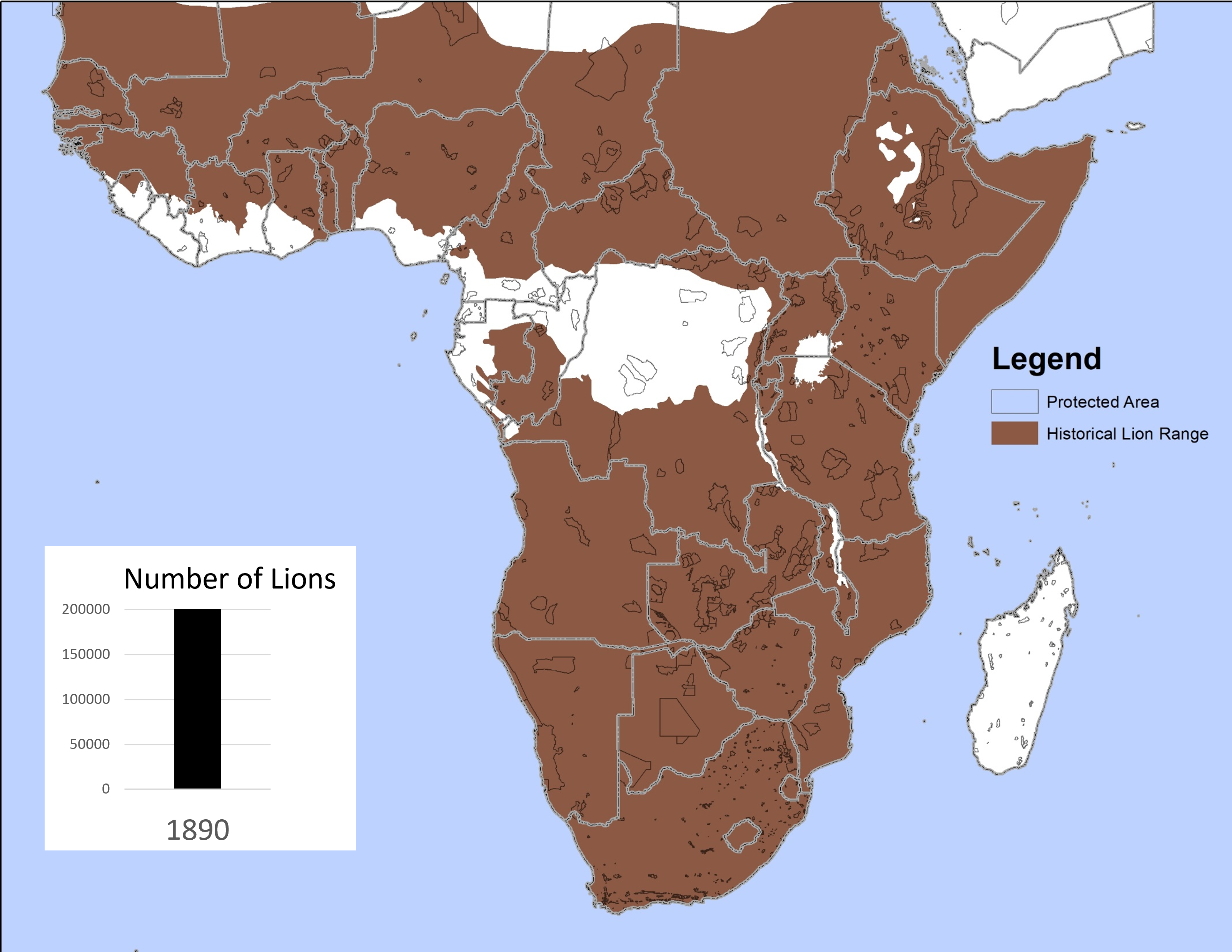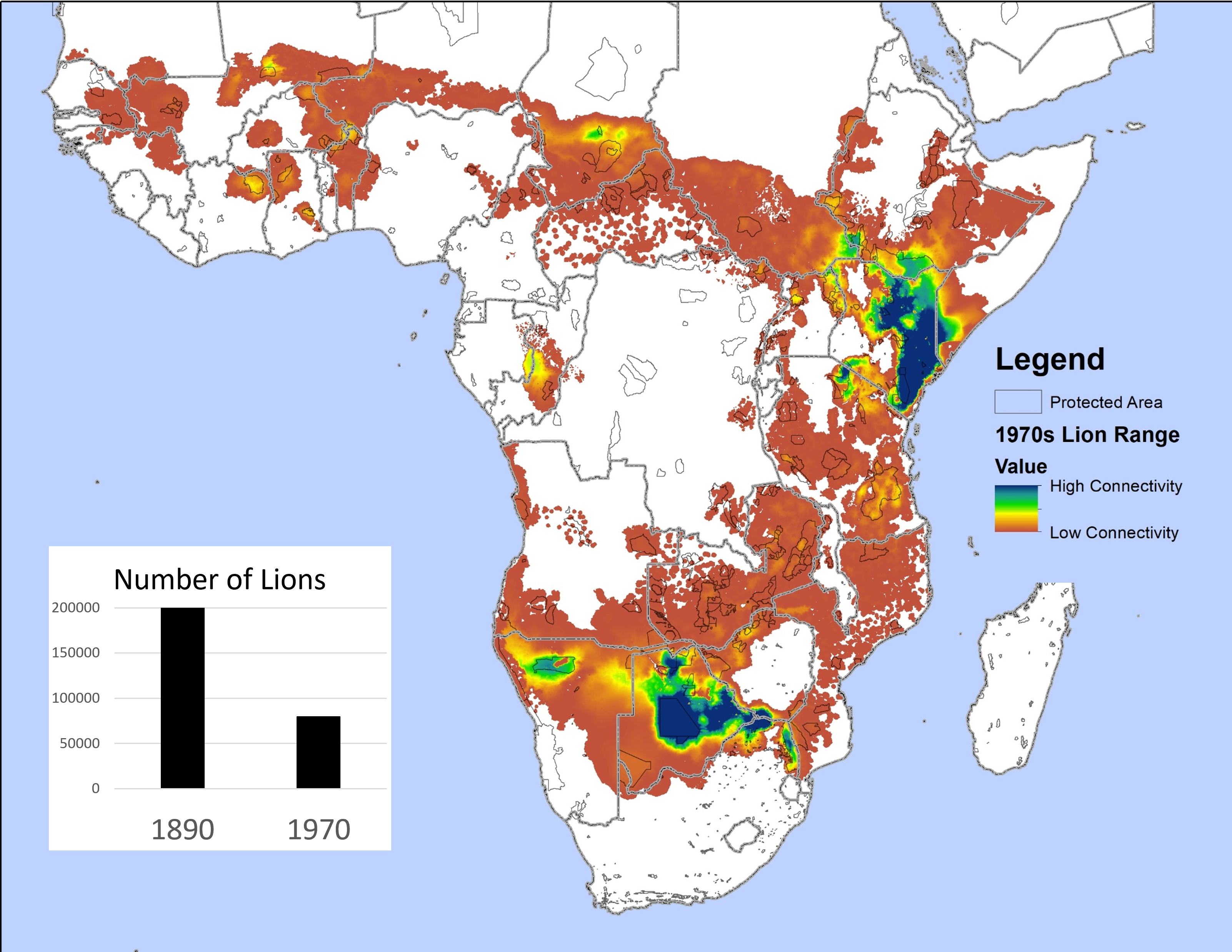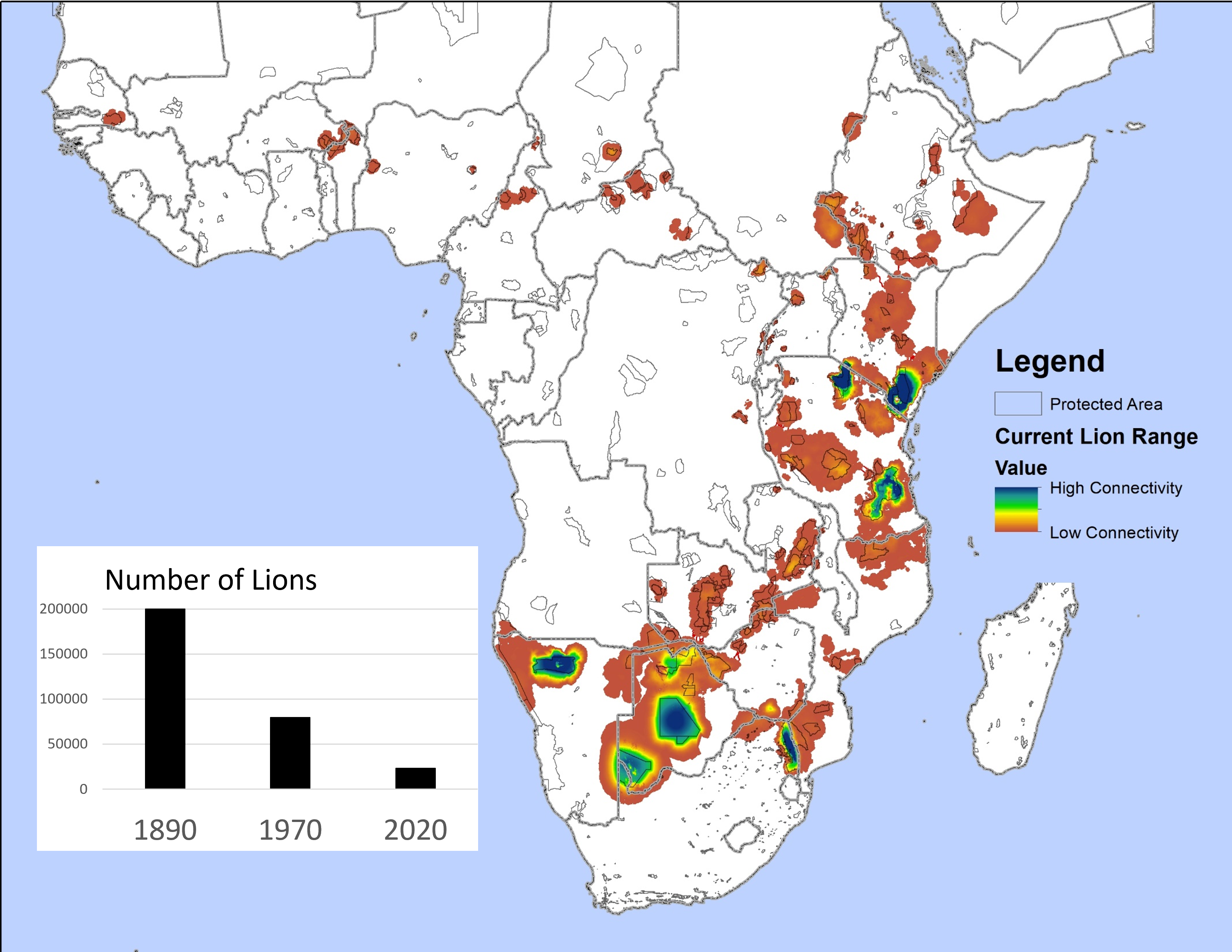News
Where have all the lions gone? Establishing realistic baselines to assess decline and recovery of African lions
Our perceptions of wildlife loss are often informed only by the reductions which take place within our lifetimes. However, these losses don’t represent the total decline of a species or habitat, with historic reductions in population size going unaccounted for in terms of our perceptions of total loss. In other words, we can’t see the losses which happened in our parents’ or grandparents’ generations, therefore we tend to chronically underestimate how much a wildlife population or habitat has been reduced from its natural state. This is known as the ’shifting baseline’ syndrome, and is a chronic problem in realistically assessing wild species declines.
Understanding the true extent of historical declines is important in deciding how to maintain landscapes of connectivity, and framing modern conservation efforts. We are aware that most large carnivores have undergone significant population contractions, but the extent of this may be underestimated, with incorrect assumptions made about the original population size. African lions (Panthera leo) are charismatic umbrella species, and their declining populations are strong indicators of the range collapse and fragmentation experienced by many other large-bodied species. Scientists are aware that lion populations have undergone huge contractions, but the question is how huge?
Using historical records of lion range and models which use environmental and ecological predictors of lion density — known to account for modern lion densities — as well as measures of human density and land use, Professor Andrew Loveridge and Dr Lara Sousa and the WildCRU team modelled the likely baseline for lion populations in Africa. They also used measures of ‘landscape permeability’ to understand how lions historically moved through landscapes, and how different regions were connected. Today, there are around 23,000 lions left in Africa; the team’s analysis suggests that the baseline population size was ~92,054 lions in c1970, and therefore that Africa’s lion population has declined by ~75% over the last five decades. Based on this historical data, they found that lion populations were well-connected until relatively recently with the most drastic distribution and connectivity declines happening in the last 50 years. Current populations now confined to 34% of their 1970s range, in fragmented core populations linked by eighteen connectivity corridors traversing less well protected habitat between population cores. These corridors are in many cases tenuous and require urgent protection, as do many of the core populations.
The new paper, published in Diversity and Distributions, provides an important tool to facilitate conservation decision-making, and avoid the risks associated with ever-shifting perceptions of the ‘original’, baseline state of lion populations.
-
 In the late 19th century it is approximated that there were around 200,000 wild lions living on the African continent.
In the late 19th century it is approximated that there were around 200,000 wild lions living on the African continent. -
 WildCRU's recent research finds that this number had declined to ~92,054 by c1970.
WildCRU's recent research finds that this number had declined to ~92,054 by c1970. -
 By 2020 the number of wild lions had dropped to around 23,000, a decline of 75% over the last five decades.
By 2020 the number of wild lions had dropped to around 23,000, a decline of 75% over the last five decades.





